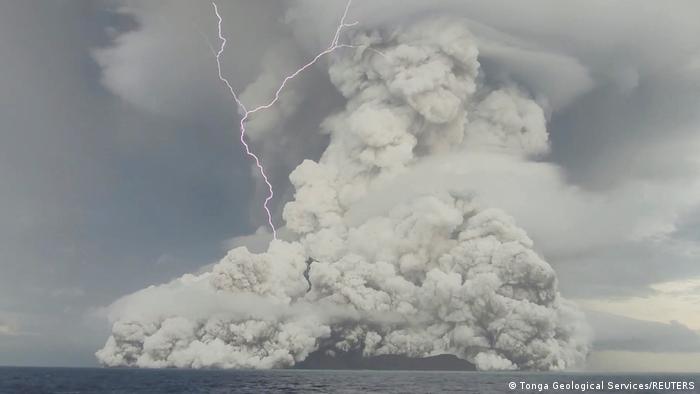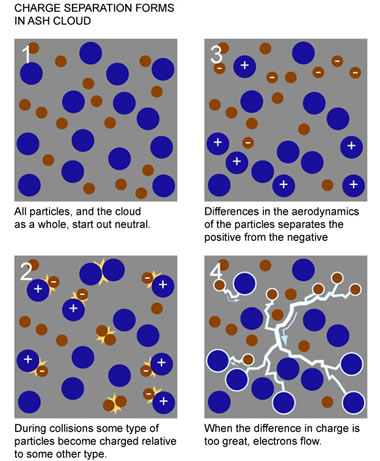
Posted on 01/17/2022 5:37:39 PM PST by Roman_War_Criminal
Scientists are struggling to monitor an active volcano that erupted off the South Pacific island of Tonga at the weekend, after the explosion destroyed its sea-level crater and drowned its mass, obscuring it from satellites.
The eruption of Hunga-Tonga-Hunga-Ha’apai volcano, which sits on the seismically active Pacific Ring of Fire, sent tsunami waves across the Pacific Ocean and was heard some 2,300 kms (1,430 miles) away in New Zealand.
“The concern at the moment is how little information we have and that’s scary,” said Janine Krippner, a New Zealand-based volcanologist with the Smithsonian Global Volcanism Program.
“When the vent is below water, nothing can tell us what will happen next.”
Krippner said on-site instruments were likely destroyed in the eruption and the volcanology community was pooling together the best available data and expertise to review the explosion and predict anticipated future activity.
Saturday’s eruption was so powerful that space satellites captured not only huge clouds of ash but also an atmospheric shockwave that radiated out from the volcano at close to the speed of sound.
Photographs and videos showed grey ash clouds billowing over the South Pacific and meter-high waves surging onto the coast of Tonga.
There are no official reports of injuries or deaths in Tonga yet but internet and telephone communications are extremely limited and outlying coastal areas remain cut off.
Experts said the volcano, which last erupted in 2014, had been puffing away for about a month before rising magma, superheated to around 1,000 degrees Celsius, met with 20-degree seawater on Saturday, causing an instantaneous and massive explosion.
The unusual “astounding” speed and force of the eruption indicated a greater force at play than simply magma meeting water, scientists said.
As the superheated magma rose quickly and met the cool seawater, so did a huge volume of volcanic gases, intensifying the explosion, said Raymond Cas, a professor of volcanology at Australia’s Monash University.
Some volcanologists are likening the eruption to the 1991 Pinatubo eruption in the Philippines, the second-largest volcanic eruption of the 20th century, which killed around 800 people.
The Tonga Geological Services agency, which was monitoring the volcano, was unreachable on Monday. Most communications to Tonga have been cut after the main undersea communications cable lost power.
American meteorologist, Chris Vagasky, studied lightning around the volcano and found it increasing to about 30,000 strikes in the days leading up to the eruption. On the day of the eruption, he detected 400,000 lightning events in just three hours, which comes down to 100 lightning events per second.
That compared with 8,000 strikes per hour during the Anak Krakatau eruption in 2018, caused part of the crater to collapse into the Sunda Strait and send a tsunami crashing into western Java, which killed hundreds of people.
Cas said it is difficult to predict follow-up activity and that the volcano’s vents could continue to release gases and other material for weeks or months.
“It wouldn’t be unusual to get a few more eruptions, though maybe not as big as Saturday,” he said. “Once the volcano is de-gassed, it will settle down.”
Meanwhile, new powerful eruption A second major eruption has been detected at the Hunga Tonga volcano on Monday, according to an alert from Australia’s Darwin Volcanic Ash Advisory Centre.
The Pacific Tsunami Warning Centre also warned of large waves in the area and said: “This might be from another explosion of Tonga volcano. There are no known earthquakes of significant size to generate this wave.”
Some say it’s fake and want to cover-up:
There were no casualties reported from the second eruption on Sunday night. However, evacuation measures are underway.

100 lightning bolts per SECOND. Wow, that must be something to see.
“Once the volcano is de-gassed, it will settle down.” — cue the burrito jokes! Who wants to go first?
Strange when the Japanese quake hit we were roused from our homes early in the morning with tsunami sirens and sheriffs knocking on doors.
This one? Nothing at all. I wonder if anyone is even manning the stations since no other country did much. The water came about thirty feet from our home, Like a King high tide. No one up and down the street even knew a thing.


Just Damn.
You took the words right out of my mouth! Dang!
There may not be anybody to rescue if this goes on much longer. I have been to Tonga. It is a low lying island. It would not take much or a tsunami to completely inundate the island.
Guess I’m not too old to learn something. How does volcanic eruption cause lightning?
What state are you in?
That is insane to hear that nobody knew.
Where are you?
Static.
Silly writer appears to associate lightning with coming eruption.
Not a good comparison with Pinatubo. Not only were their volcanologists crawling all over it until the last minute, but the US base commander (Col. Jeffrey R. Grime, commander of the 3rd Tactical Fighter Wing at Clark Air Force Base) next door thoroughly had his stuff together and did everything right and in a timely manner.
A good indicator is taking video of a pyroclastic flow closing in on your location at high speed. This means you waited a tad too long.
How lightning forms in general is still debated among scientists, and volcanic lightning is even less well understood. What is mostly agreed upon is that the process starts when particles separate, either after a collision or when a larger particle breaks in two. Then some difference in the aerodynamics of these particles causes the positively charged particles to be systematically separated from the negatively charged particles. Lightning is the electrical flow that results when this charge separation becomes too great for air to resist the flow of electricity. Some of the lighting strokes in these photos are at least 2 miles long, so the separation of charged particles must occur on this scale.
Here is an idealized sequence of events that leads to lightning:

These photos are of the Redoubt Volcano in Alaska and were taken by Bretwood Higman. He set his camera up to take 30 second exposures every two minutes.


I remember a few years ago there were some absolutely astonishing photos of lightning in a Chilean volcano. Here's one...

Ring Of Fire...you’ve gotta expect bumpy times.
The “experts “ didn’t see this coming. What makes people think they know what’s going to happen from now on?
Looks like a big nuclear explosion.
“A second major eruption has been detected at the Hunga Tonga volcano on Monday”
So it aint done. We may get to see a real Jim dandy. Maybe a VEI 7. Pinatubo was a 6. Tambora a 7.
If its still giving it hell, meaning vast amounts of sulphur gases are being released.
This WILL effect the southern hemisphere weather.
Man..them thar are some really amazing photos you found.
Disclaimer: Opinions posted on Free Republic are those of the individual posters and do not necessarily represent the opinion of Free Republic or its management. All materials posted herein are protected by copyright law and the exemption for fair use of copyrighted works.